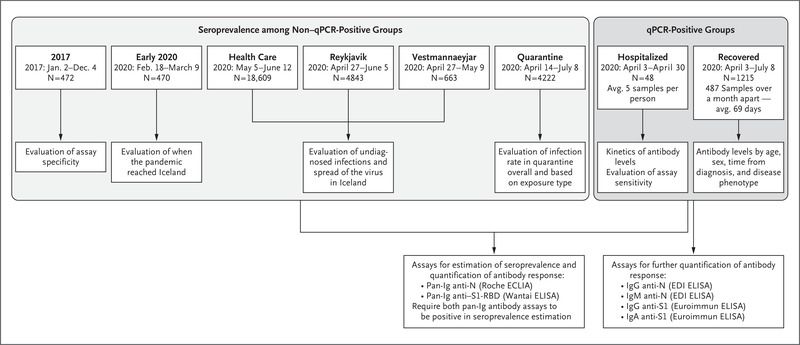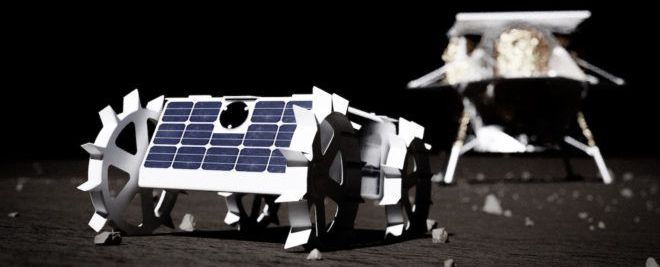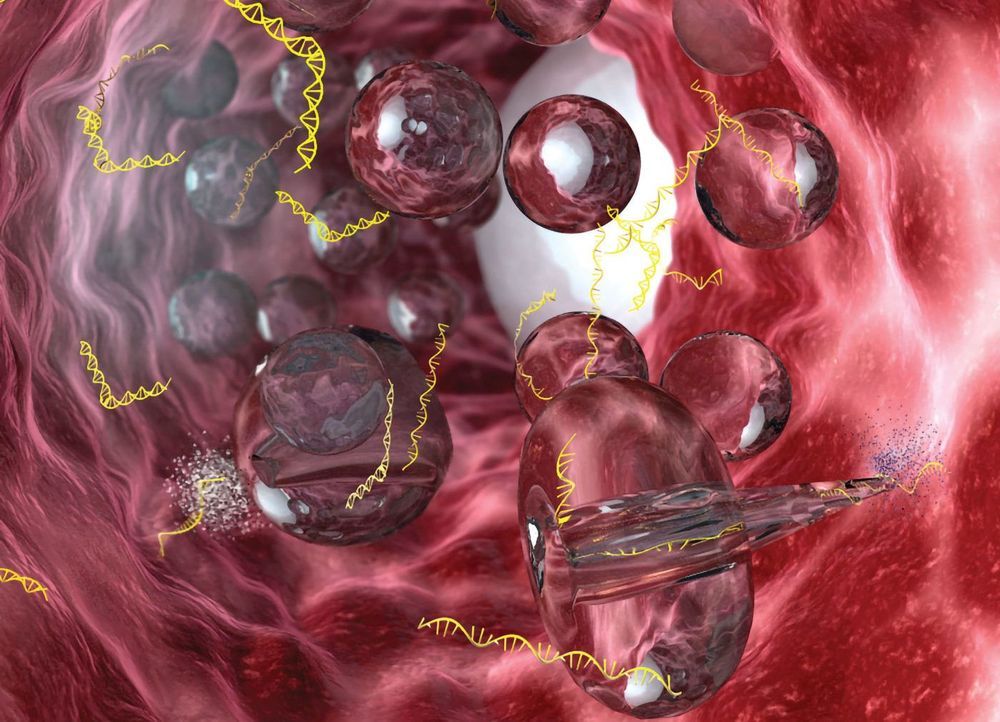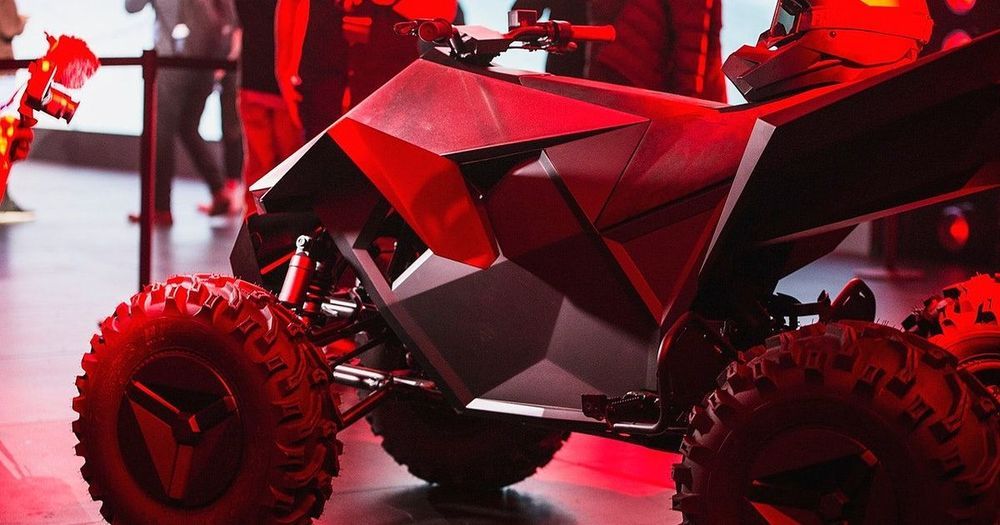Get ready to check into the Multiverse, fellow travelers, and enjoy all the sights, sounds and experiences that the 2020 Burning Man has to offer.



Severe acute respiratory syndrome coronavirus 2 (SARS-CoV-2), causing coronavirus disease 2019 (Covid-19), emerged in December 2019.1 Seroconversion of most patients with Covid-19 occurs between 7 and 14 days after diagnosis.2,3 A study of 61,000 persons in Spain showed that 5% of the population had formed antibodies against the spike and nucleoproteins and that approximately one third of infected persons were asymptomatic.4 It was suggested that a substantial fraction of those infected become antibody-negative early in the convalescence period.5 Several studies have reported a higher prevalence4 and levels3,5 of SARS-CoV-2 antibodies in severely ill patients than in those with no or mild symptoms.
The infection fatality risk of SARS-CoV-2 is difficult to estimate because the total number of diagnosed and undiagnosed cases is needed as the denominator. The infection fatality risk was reported as 0.4% in a small German town after carnival festivities,6 0.6% on the Diamond Princess cruise ship,7 and 0.66% in China.8
Well-validated serologic assays for SARS-CoV-2 are urgently needed. Several small comparative studies of commercial SARS-CoV-2 antibody assays have been published.9–12 A highly specific assay is required for screening populations with a low seroprevalence, such as that in Iceland.

Here’s my latest video!
Germ-free mice (animals don’t have a microbiome) live longer than microbiome-containing mice, but it’s impractical for people to live in a bubble for their entire lifespan. As a more practical approach, which microbiome-derived factors impact lifespan, and can they be modified?
Dietary supplementation with acarbose increases lifespan, and one reason for that may involve reduced circulating levels of glucose, but the other side of that story involves increased gut bacterial production of short chain fatty acids (SCFAs). Whether acarbose will increase lifespan in people is unknown, and with the goal of increasing lifespan, are there other ways to increase SCFAs?

Astrobotic has been awarded two contracts by NASA to support the development of payloads for future delivery on its 4U and 6U CubeRovers— presented as the world’s first line of commercial lunar rovers. CubeRovers are standardized and scalable, providing planetary surface mobility services that support a variety of scientific and commercial missions.
The first $741,000 contract will fuel work on a novel ultra-wide, non-contact Ground Penetrating Radar (GPR) antenna co-developed by Astrobotic and The Ohio State University. The antenna will integrate with a prototype of Astrobotic’s 6U CubeRover, the largest of the CubeRover family, and then test its use on the ground.
Useful for both Earth and planetary science applications, the single antenna can be integrated with diverse mobile platforms to better support lightweight, affordable, subsurface science investigations. GPR tech at this small, lightweight scale is nonexistent in the space market and could enable simple and reliable characterization of lunar lava tubes, subsurface water-ice, and the location of planetary ore deposits.

Nature has spent millennia honing the virus into a ruthlessly efficient delivery vehicle for nucleic acids. Viruses have even been harnessed for our own delivery purposes. But some applications have had only mixed success. For example, commercial applications of genetic engineering, which require high scalability, low cost, and impeccable safety, remain a challenge.
Although they can easily enter the body and inject their payload into cells, viruses may stimulate a dangerous immune reaction and cause long-term medical complications. In addition, viruses can be expensive and time consuming to cultivate.
Safer and more practical alternatives to viruses are being sought by innovative companies. For example, these companies are developing nonviral gene delivery systems that incorporate nanoparticle formulations, ultrasound, and electric fields. These systems can slip bits of genetic material into cells efficiently and cost-effectively in a range of applications.



Featured Image Source: SpaceX
SpaceX is building Starship in South Texas at Boca Chica Beach. The aerospace company’s founder Chief Engineer Elon Musk envisions developing a fully reusable Starship capable of transporting one hundred passengers to Mars. During the Humans To Mars conference on Monday, he shared SpaceX will have to conduct ‘hundreds of missions’ before launching astronauts aboard. – “We’ve got to first make the thing work. […] Do hundreds of missions with satellites before we put people on board,” he said.
Multiple stainless-steel Starship prototypes are under assembly and undergoing testing at a small village where Musk envisions building the ‘Gateway to Mars’ spaceport. Last month, SpaceX successfully conducted a low-altitude test flight of a scaled-down Starship prototype. The vehicle soared 150-meters off the ground powered by a single Raptor engine. The company aims to make flying stainless-steel vehicles routine in Texas before attempting to launch a Starship prototype to orbit. “We’re making good progress. The thing that we’re really making progress on with Starship is the production system,” Musk told the conference’s host. “The thing that really impedes progress on Starship is the production system … A year ago, there was almost nothing there and now we’ve got quite a lot of production capability. So, we’re rapidly making more and more ships.”

Scientists suggest that a counter-intuitive, hypothetical species of black holes may negate the standard model of cosmology, where dark energy is an inherent and constant property of spacetime that will result in an eventual cold death of the universe. “It’s the big elephant in the room,” says Claudia de Rham, a theoretical physicist at Imperial College London about dark energy, the mysterious, elusive phenomena that pushes the cosmos to expand so rapidly and which is estimated to account for 70% of the contents of the universe. “It’s very frustrating.”
Generic Objects of Dark Energy
Astronomers have known for two decades that the expansion of the universe is accelerating, but the physics of this expansion remains a mystery. In 1966, Erast Gliner, a young physicist at the Ioffe Physico-Technical Institute in Leningrad, proposed an alternative hypothesis that very large stars should collapse into what could be called Generic Objects of Dark Energy (GEODEs). These appear to be black holes when viewed from the outside but, unlike black holes, they contain dark energy instead of a singularity.